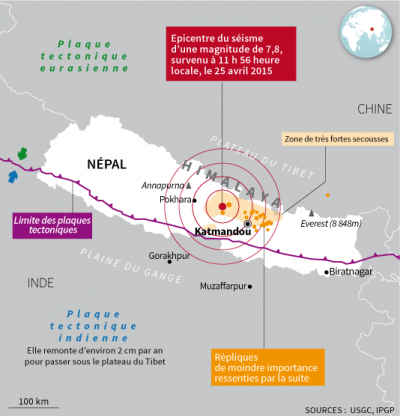Diary from Kathmandu: Demolition Dilemmas across Nepal

There is little doubt that they have to come down. But how will priorities be decided? Who will pay? Then how will the formidable task of securing Nepal’s homes, schools, hospitals and offices proceed? In Kathmandu valley and beyond, new medical and business complexes, government centers, police posts, universities halls and libraries, temples and monuments, and high rise dwellings –from the most prized heritage sites to model rural medical centers –are badly damaged and marked for demolition. Some structures are visibly disfigured and non-functional; some lie folded into heaps of rubble; some appear serviceable although they are not. Whatever their appearance, the task of demolition and clearing rubble is immense, its implementation hard to grasp, despite the great urgency.
Although the most widespread damage is in rural areas across the 13 districts (of 75 nationwide) adjacent to Kathmandu, debris removal and reconstruction may be easier there. Rural dwellings are by and large constructed by farmers from local materials and are one and two stories only.
Across Kathmandu one occasionally passes cranes at work. The most colossal machines that ever treaded the lanes and tracks of the valley, they methodically attack 4-story villas that once stood confidently in purple, red or blue coats but now offer less protection than a 5 mm thick tarpaulin pinned in a clearing beyond a local temple or strapped to an unsteady tree.
Those lumbering orange giants claw at brick walls of traditional modest dwellings; they batter glass facades of grand modern offices like Kantipur Publications; they hover above half-buried villas jabbing at their roofs. Heaps of rubble spill into roadways as the professional crews and soldiers move on, leaving residents to await teams who’ll somehow remove these piles of detritus. (Forget about rebuilding for now.) Somehow, in the confusion and clutter that is Nepal today, from their tented ministry offices, bureaucrats fashion plans about
how reconstruction will proceed. Proposals seem awfully tentative to this observer; neither do they convince most citizens that a viable scheme exists, although some really believe that demolitions will proceed responsibly.
Not waiting for the engineers to visit them and eager to resume some normality, private householders are one-by-one reoccupying their rooms and shopkeepers are buttressing their dwellings with 12 foot bamboo, wood or iron poles. (It’s temporary, they say.) Others (residents or the army, we’re not sure) set a few boulders and bricks on the pavement to warn vehicles and pedestrians that something uncertain hovers not far above them. Occasionally a road is blocked by a rope with a bold red warning hanging from it.
Engineers are out in force. (The Nepal Engineer’s Association lists its phone number in city dailies.) Local ward officials have invited house owners to fill forms requesting an inspection. May 20th The Himalayan Times (http://www.epapersland.com/nepal/himalayan-times.html) reports that since May 4th 2,500 of its engineers are engaged with 25 international counterparts to assess buildings inside and beyond Kathmandu Valley.
One NGO working with these respected, and incorruptible NEA engineers is US-based GFI who found that only 20% of 1,500 houses inspected were uninhabitable and due for destruction while 40% are safe to live in and 40% in need of repair http://www.ekantipur.com/the-kathmandu-post/ May 21, 2015. (In which localities the survey was done is unspecified). An earlier NEA preliminary investigation (May 9, The Himalayan Times) indicated that 70% of houses in Kathmandu Valley (with several million residents) were safe. May 18, the Ministry of Foreign Affairs declared it could not handle the multi-story demolitions due to inadequate equipment and was thus reaching out to others for help. Whatever the figures, it’s a daunting concern.
Meanwhile commentaries are offered in the press and anecdotally about conditions responsible for these many collapsed structures: buildings are constructed on soft land without proper foundations; illegal wells are bored under large dwellings destabilizing their foundations; shoddy, cost-cutting materials are used by cheating contractors. Much blame is reserved for landlords who build-to-rent and thus skirt the rules (supported by permits from corrupted officials). These rumors are now endorsed by newly published investigative research by Himal (www.himalkhbar.com May 24-30, 2015) the Nepali language weekly run by the notable journalistic team of Kunda and Kanak Dixit). This excellent report names names, prints photos of rows of crumbling apartment complexes together with doctored building permits.
Reconstruction is manageable, but only if more quakes and the approaching monsoon rains don’t further destabilize shaky neighborhoods, create more havoc and halt work in progress. Regardless, it will take years for life to return to normal which is uncertain at best, and for most citizens, perennially desperate. In their foreseeable future, they have no sign that– although millions of them will move out of their tents and settle into new homes and offices– a stable and just government will do its part. END
Before beginning her journalistic work in the Arab lands, anthropologist Barbara Nimri Aziz spent several decades conducting research in the Himalayan areas. Her books include “Tibetan Frontier Families”, “Soundings in Tibetan Civilization”, (both reprinted in 2011) and “Heir to a Silent Song: Two Rebel Women of Nepal” (2001) all available through Vajra Books, Kathmandu (vajrabooks.com.np). Her latest book is “Swimming up The Tigris: Real Life Encounters with Iraq”, U. Press Florida, 2007.

